Admitting that she paid $500 for a new floral print Vera Wang bag, Adriana Castro couldn’t help but blush.
“I got it on sale two months ago,” the hospital coordinator said quietly, away from the ears of her teenage niece. “It was originally $2,250. And it’s something different, not like your typical black or brown leather.”
On a recent Saturday at The Grove mall in Los Angeles -- where nearly everyone sports a sparkling logo or three -- Castro wasn’t shopping, but hanging out with her family. “I don’t shop as much as I used to,” she said. “Especially for splurgy items, clothes, shoes. With the economy, you try to be more conscious.”
Still, it’s hard to resist a good sale once in a while when, at least for the moment, you have a job. Castro wasn’t the only one to treat herself this holiday season. Industry insiders have noticed a comeback of what they call “aspirational shoppers” -- those women and men who spend big chunks of their incomes on bags, watches, gadgets and other status symbols. Armed with credit cards, they’re charging "affordable" luxury brands like Michael Kors -- the self-proclaimed "Hermes for Staten Island" -- toward whirlwind success.
But are these luxuries really affordable? In an economic recovery that is still itself largely aspirational, some are worried that the return of middle-class overspenders is no more than a relapse in disguise.
Armine Melkonyan, 35, of Los Angeles, bought the classic quilted Chanel "Timeless" bag in December after obsessing over it for nearly two years, paying with a credit card. The price? $2,100, according to a sales representative at the Beverly Hills Chanel store. Melkonyan doesn’t have a job right now -- she’s a student at the Los Angeles City College -- but says the money isn’t a problem. "You just have to keep up with the bills every month,” she said.
Banks, it seems, are just as relaxed as Melkonyan, handing out cards with uncharacteristic generosity. Bank of America, for one, saw a 50 percent surge in new credit card accounts during the last three months of 2011, compared to the same period of 2010. In November, meanwhile, credit card spending rose 7 percent, according to merchant processing company First Data.
Stores noticed the change. Luxury department store Saks Fifth Avenue, one of the biggest winners in the 2011 holiday retail tussle, reported same-store sales up 7.7 percent in the last three months of 2011, which it credited in part to middle class shoppers.
“You are clearly seeing aspirational customers starting to shop,” CEO Stephen Sadove said on the company’s earnings call with analysts last week.
Of everything sold at Saks, handbags did particularly well. Macy’s, a mid-range department store, saw similar trends. “I think [the customer] really wants designer and logo right now,” said Russell Orlando, Macy’s accessories fashion director in an interview. “The whole classic piece in leather at a higher price point is driving the business ... It’s been going on a year now.”
The aspirational "look" is becoming a fashion trend, as well. Michael Kors, one of retail's most profitable brands, has championed the aesthetic with logo-covered bags ranging from $2,495 to $128.
The "sweet spot" for shoppers is $348 to $398, Michael Kors executives told analysts on the company's most recent earnings call with analysts, saying "jet-set" no less than five times. "Jet-set" is Michael Kors’ favorite buzzword for its look: Picture soft leather and classic prints, safe enough to wear in Minneapolis or Milan. Michael Kors raised $944 million in an IPO in December, valuing the company at $3.8 billion.
Ironically, a $348 "Jet Set" tote might just be what kills the trip to Europe for some people.
Genevieve Spitz, 23, of Boston, says she sometimes has to pick between plane tickets and shopping. "I'm one of those people who'll say 'Wow, I love that piece. I'm going to buy it, no matter the cost. And then I do. Unless, of course, I could buy a plane ticket to Spain instead."
"I'm not buying designer stuff," Spitz says. "It's more like, can I technically afford those $300 shoes? No. Will I be unable to afford food for the next few weeks if I buy them? No."
As in dieting, it's especially hard to say "no" to cravings after a long dry spell. More than three years after the recession began, many Americans are looking for small tokens to make life feel richer, like high quality fabrics or an eye-catching watch.
George Loewenstein, professor of economics and psychology at Carnegie Mellon University, is working on a study with colleague Russell Golman examining how society's image of "the good life" impacts consumer decisions. "Sometimes people are worried that they're poor or appear poor, so they spend money as a way to reassure themselves," Loewenstein said. "But of course, it's about the worst possible strategy you could have."
For any class of shopper, the current push by banks to issue new credit cards will no doubt create temptation to overspend. "Credit cards anesthetize the pain of spending money," Loewenstein said.
Melkonyan, for one, isn't losing sleep over her new Chanel bag -- unless you consider the late night parties where she’ll wear it. "I don't care about the brand; it's not because [the bag] is expensive," she said. "I want something beautiful."